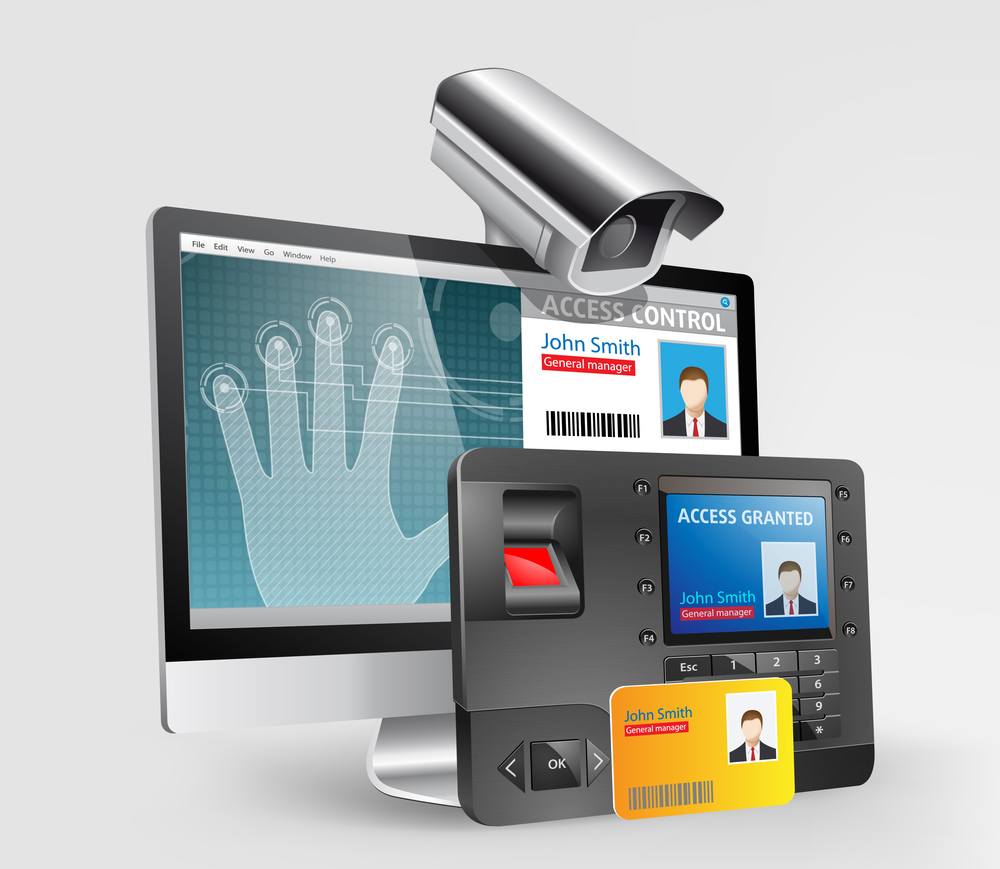
Do you know what an Electronic Access Control System (EAC) is? Chances are, you do. You’ve probably had the experience of being buzzed in somewhere after the receptionist confirms your identity. Have you ever wondered what that “buzz” sound actually is? It is the result of the current from the power source and it makes the lock vibrate. An EAC is simply an electronic door lock, a reader, and a form of an electronic controller. The reader could be anything from the receptionist identifying you by him/herself to a card reader to a fingerprint scan.
Readers are the only part of an EAC most visitors will see because they are mounted at the outside of the door. In modern EAC’s, the readers are designed to recognize either codes, credentials, or biometrics. A code would be something that you have to present to the entry to let you in, such as a PIN entered on a keypad. A credential reader would require you to swipe a card or present a key fob. A biometric reader would require your fingerprint, finger vein pattern, or hand geometry.
Of all of these Electronic Access Control Systems, the keypad is the simplest and cheapest. By providing the correct code, you gain access to the building. In places of high security or confidentiality, keypads would not be recommended because codes can be easily shared and stolen. You can combine the keypad method with a credential or biometric access method for increased security. This gives you a “two factor authentication” for a more secure approach.
Credential access systems usually come in the form of a card or a key fob that will hang on your keychain. Most commonly used credential access systems are Radio Frequency Identification (RFI) cards. These cards have the ability to be read from a certain distance and in certain situations, do not even need to be removed from your pocket to be used.
Biometric readers create a digital template after scanning a unique part of your body. For example, you come to a door and request access, and the EAC will scan your fingerprint compares that scan to the scan stored in the system. When there is a match, you are allowed access into the building. As discussed earlier, there are fingerprint scans, finger vein patterns, and hand geometry scans. Fingerprint scans are now standard equipment on laptops. Finger vein patterns are similar to fingerprint scans, but they look below the surface of your finger and scan the vein pattern instead of scanning your fingerprint. Hand geometry readers will make a template from the size and shape of your hand; these are widely used in banks and other security industries.
EAC’s also give you the option to restrict access to certain employees and visitors based on the time of day. You can distribute a custom key to certain people based on the time of day they are supposed to be there. In the situation of a lost or stolen credential, it can be deleted or deactivated from the system quickly with little to no cost to you. If anyone attempts to gain access with a deleted or deactivated card or key fob, the EAC system will deny access and can notify you.
You might be asking yourself if your business would benefit from installing an EAC. No matter what industry you’re in, there are certain security measures you must take to protect your business, your employees, and yourself, and this is where the EAC will benefit you. The larger the business, the more security you will need, but don’t overlook an EAC just because you have a small business and you aren’t sure if you could benefit from using one.
At SecurCom, we pride ourselves on being able to supply a complete Door Access Solution for your location. From the card reader to the software and even the Electronic Door Locking Hardware. Contact SecurCom Today to find out which Electronic Access Control System is right for you.

